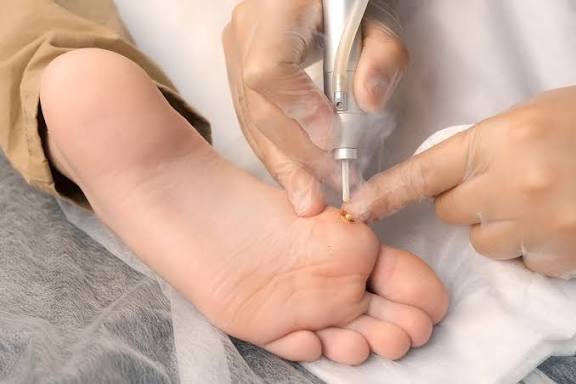Thinking of pulling out plantar warts with tweezers? Learn why this method can be risky, the safer alternatives available, and when to consult a specialist like drkelkarhospital.com for effective wart removal.
Plantar warts are small, rough growths that appear on the soles of your feet, often caused by the human papillomavirus (HPV). While they may seem harmless, these warts can cause pain and discomfort when walking or standing. Many people consider pulling out plantar warts with tweezers as a quick home remedy, but this method is not only ineffective—it can also lead to infection, scarring, and spreading of the virus.
Why You Shouldn’t Use Tweezers to Remove Plantar Warts
Using tweezers might seem like a simple way to “pluck out” a wart, but plantar warts grow deep into the skin, forming roots that aren’t visible on the surface. Pulling them out manually rarely removes the entire wart and often damages surrounding healthy skin. This can lead to:
- Bleeding and Pain: Tweezers can tear skin tissue, causing unnecessary pain and open wounds.
- Infection Risk: Exposing the inner layers of skin makes it easy for bacteria to enter, leading to serious infections.
- Viral Spread: The HPV virus responsible for warts can spread to other parts of the foot or even to your hands and other people if proper hygiene isn’t maintained.
- Wart Recurrence: Since tweezers can’t remove the wart’s root, it’s likely to grow back stronger or multiply.
In short, self-removal using tweezers is not a safe or reliable method. Instead, focus on proven medical treatments or over-the-counter solutions designed to eliminate warts effectively.
Safer Alternatives for Treating Plantar Warts
There are several safer, more effective ways to deal with plantar warts without risking damage to your skin.
-
Salicylic Acid Treatments:
Available in gels, pads, and liquids, salicylic acid gradually peels away wart layers while stimulating your immune system to fight the virus. -
Cryotherapy (Freezing):
A dermatologist or podiatrist applies liquid nitrogen to freeze the wart, causing it to fall off over time. This method is both precise and hygienic. -
Laser Therapy:
For stubborn warts, laser treatment can target the affected tissue without harming surrounding skin. -
Cantharidin Application:
A painless, in-office procedure where the wart is covered with a blistering agent to lift it from the skin. -
Immune Therapy:
Strengthening your immune response helps your body naturally eliminate the virus responsible for the wart.
Home Care Tips to Prevent Warts
Even if you’re getting professional treatment, taking good care of your feet helps prevent future outbreaks. Always wear flip-flops in public showers or pools, keep your feet dry, and avoid sharing socks or shoes. If a wart does appear, cover it with a bandage to stop it from spreading.
When to See a Doctor
If your wart is painful, persistent, or spreading, it’s best to see a specialist. Medical professionals have the tools and expertise to remove warts safely and effectively. Hospitals such as drkelkarhospital.com offer advanced dermatological treatments that ensure your plantar warts are treated with care, preventing recurrence and minimizing discomfort.
In Summary:
Pulling out plantar warts with tweezers may seem tempting, but it can cause more harm than good. Instead of risking infection or spreading the virus, choose medically approved treatments or consult a dermatologist for safe and effective removal. With proper care and professional guidance, you can get rid of plantar warts for good.

